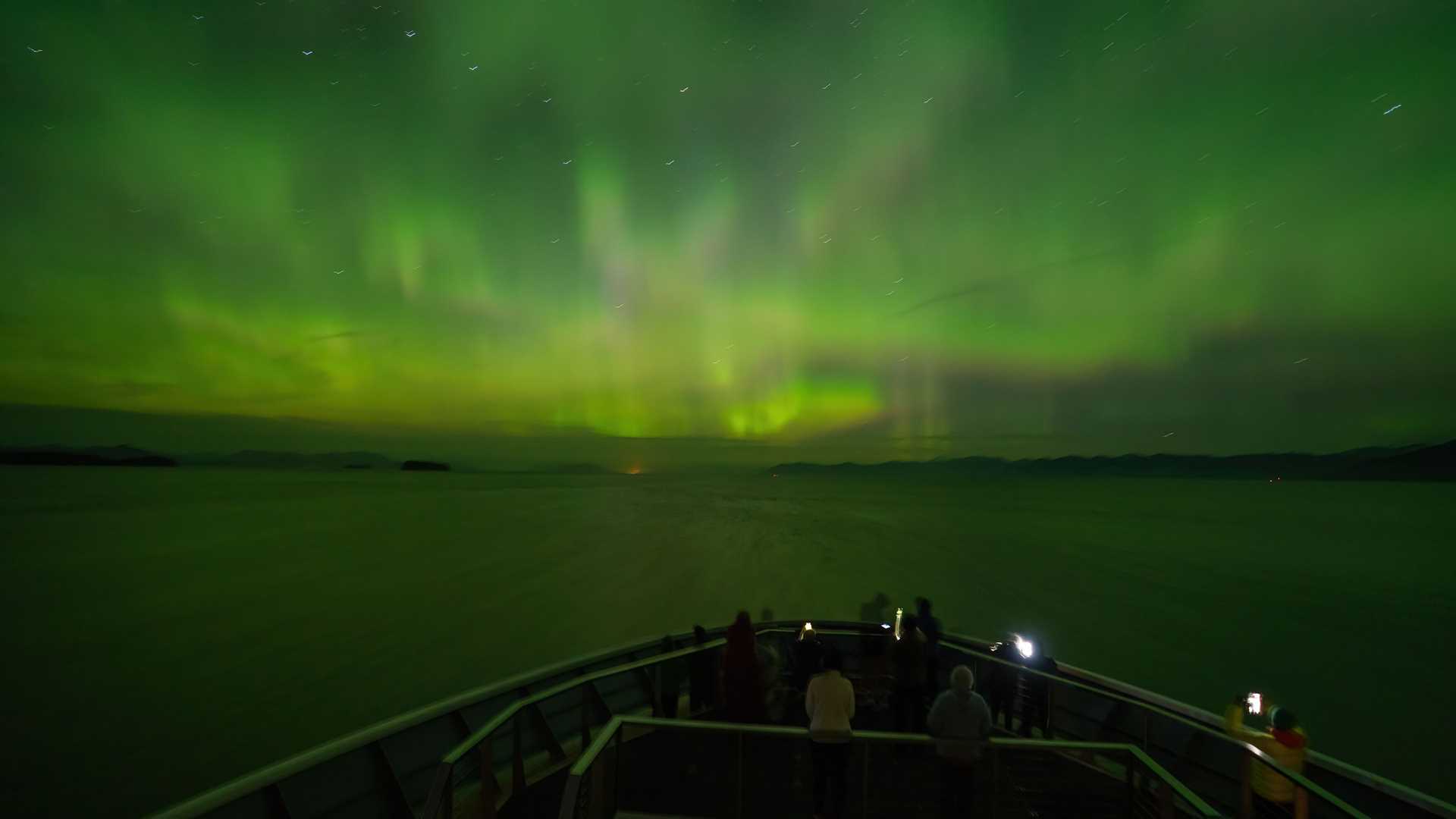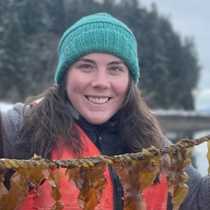Our day started early. Very early. So early that some people had not even gone to bed yet. We were awake because the sky was clear, and we were hoping for a light show.
And what a light show we had.
The northern lights, or aurora borealis, can happen at any time of the year, but the sky must be clear of clouds and dark enough to see them. In the Land of the Midnight Sun, and in the world’s largest temperate rainforest, those two conditions don’t often align. But we were treated to a spectacular show this morning as we headed towards the green-lit horizon. While vivid ribbons of green shifted and pulsed ahead, the Milky Way and Perseid meteor shower were shining brightly above us.
After catching a few hours of rest, we roused ourselves in the daylight as we navigated the narrow length of Endicott Arm. Located in Tracy Arm-Fords Terror National Wilderness, Endicott Arm is a deep glacial fjord carved by ice. At the end of the arm sits Dawes Glacier. The glacier spills out of the Stikine Icefield, a solid lake of ice cradled high in the Coastal Mountains. The terminus, or face, of the glacier reaches the sea, which allowed us to cruise through chunks of ice towards the towering glacier on Zodiacs.
Harbor seals swam between ice chunks, their shiny, round heads reflecting the clear morning light. Waterfalls spilled down sheer rock faces along the fjord. Our Zodiacs quickly transformed into toy boats in the immense scale of space around us.
Back on-board National Geographic Venture, we retraced our route back out of Endicott Arm, out of Holkham Bay, and back into Stephens Passage. The afternoon sun was warm as we cruised south, and we soon found ourselves surrounded by dozens of humpback whales in Frederick Sound. The giant animals rose gently to the surface from their feeding dives, exhaling a twenty-foot column of steamy breath into the evening air. A beautiful sunset colored the sky as we journeyed on towards our next adventure.
Photo caption: Northern lights. Photo by Shayne Sanders







